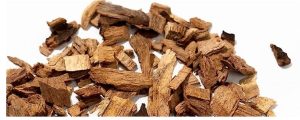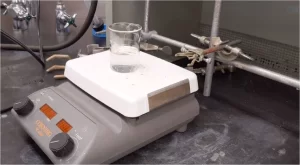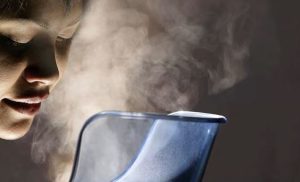Is It Bad If Your Microwave Has Rust Inside?
Yes, it is bad if your microwave has rust inside. Rust can compromise the microwave’s efficiency and safety.
Rust inside a microwave is not just an aesthetic issue; it can pose potential hazards. Over time, the rust can eat through the metal walls of the microwave, leading to potential leaks of electromagnetic radiation. Such leaks can be harmful and reduce the efficiency of the appliance. If the rust is under the turntable or on the door, it can interfere with the microwave’s ability to cook food evenly.
A common concern is whether a microwave with rust is safe to use. If the rust is superficial, it might not immediately render the microwave unsafe. Yet, if the rust has corroded the metal, there’s a risk. Exposed metal can lead to sparks or even fires when the microwave is in use.
Similarly, if the paint inside the microwave is peeling, it can expose the metal underneath, which can be dangerous when the appliance is operating.
There are ways to fix rust spots, especially if they are on the door or under the turntable. Cleaning the affected areas and using microwave-safe paint can help. But if the rusting is extensive, it might be time to consider a replacement.
Why Microwaves Rust Inside
Microwaves, like any other appliance, are susceptible to wear and tear over time. One common issue many users face is the appearance of rust inside their microwaves. Several factors contribute to this.
Moisture is the primary culprit. Every time you heat food, it releases steam. If this steam doesn’t escape or isn’t wiped away, it can settle on the microwave’s interior, leading to rust over time.
Using acidic or salty foods can also accelerate this process, as these can corrode the microwave’s inner lining. Furthermore, if the protective paint inside the microwave chips or peels off, the exposed metal underneath becomes vulnerable to rusting.
Safety Concerns with Rusty Microwaves
Rust inside a microwave isn’t just an aesthetic issue; it can also be a safety concern. Rust can compromise the integrity of the microwave’s walls, potentially leading to leaks of electromagnetic radiation.
If the rust has corroded through the metal, there’s a risk of sparks or even fires during operation. While superficial rust might not pose an immediate threat, it’s essential to monitor its progression.
If the rusting becomes extensive, it’s advisable to replace the microwave to ensure safety during its operation.
How to Remove Rust From Microwave?
Removing rust from the interior of a microwave can help extend its lifespan and ensure it operates safely. While rust doesn’t immediately render a microwave unusable, it’s essential to address it to prevent further damage. Here are some methods to effectively remove rust from your microwave:
Baking Soda and Water Method
Step 1: Create a paste by mixing equal parts of baking soda and water.
Step 2: Apply the paste to the rusted areas using a soft cloth or sponge.
Step 3: Let the paste sit for 10-15 minutes.
Step 4: Gently scrub the rusted areas in a circular motion.
Step 5: Wipe away the residue with a damp cloth and dry the area thoroughly.

White Vinegar Solution
Step 1: Mix equal parts of white vinegar and water in a bowl.
Step 2: Soak a cloth or sponge in the solution.
Step 3: Wipe the rusted areas with the soaked cloth or sponge.
Step 4: Allow it to sit for 10 minutes.
Step 5: Scrub the rusted areas gently and wipe clean with a damp cloth.
Lemon Juice and Salt Technique
Step 1: Sprinkle a generous amount of salt over the rusted areas.
Step 2: Squeeze lemon juice over the salt until it’s wet.
Step 3: Let the mixture sit for a couple of hours.
Step 4: Use the lemon rind to scrub the rusted areas gently.
Step 5: Clean the area with a damp cloth and dry thoroughly.
After removing the rust, it’s a good practice to touch up the cleaned areas with microwave-safe paint to prevent future rusting.
Preventing Microwave Rust
Prevention is always better than cure. To prevent your microwave from rusting inside, always ensure it remains dry. After using the microwave, leave the door open for a few minutes to let out the steam and moisture.
Wipe down the interior regularly to remove any food splatters or standing water. Using microwave-safe covers can also minimize splatters and reduce moisture buildup. Periodically check the inner lining and paint.
If you notice any chipping or peeling, consider using microwave-safe paint to touch up those areas.
Learn More: Does Plastic Wrap Melt In The Microwave?





